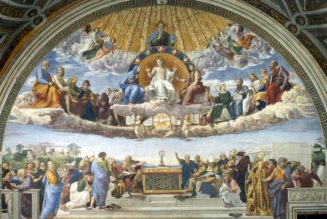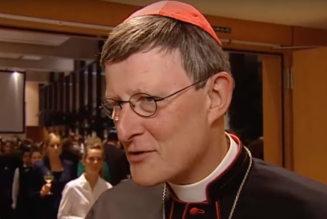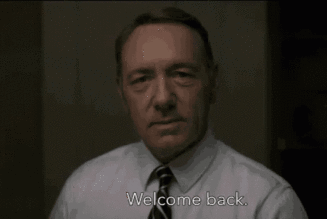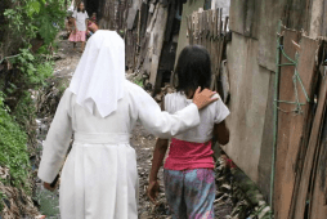
Dec. 25 is a federal holiday. But just because Uncle Sam takes Christmas Day off from work doesn’t mean that Catholics should be taking their Christmas cues from ambient American culture.
Whether the true religious meaning of the holiday is acknowledged or not, the Christmas season in America tends to be overly commercialized, overly stressful and over before it’s really even begun. It’s worth asking just how much an authentically Catholic celebration of Christmas overlaps with some American societal mainstays — and in what ways it might need to be intentionally countercultural.
To help think through some ways of celebrating Christmas as Catholics, the Register spoke with Leah Libresco Sargeant, a popular Catholic speaker and author; Hoffman Ospino, a professor of Hispanic ministry and chairman of religious education at Boston College; Louis Brown, executive director of Christus Medicus Foundation; and Timothy O’Malley, the director of education at the McGrath Institute for Church Life and academic director of the Notre Dame Center for Liturgy.
Let’s start off with the heavy stuff first. Santa: Yes or No
LIBRESCO: We’re not planning to tell our daughters the Santa story — we don’t think it’s a good idea to have one big part of Christmas that children gradually unravel be untrue. It raises questions about whether parents are telling the truth about Christ! When we cover it, we’ll introduce it as a game of pretend everyone likes playing at Christmas, and, of course, it’s never polite to point out things are pretend in the middle of an imaginative game.
O’MALLEY: Our family has taken a Switzerland position on Santa — total neutrality. We just don’t speak about him. Gifts come from those we love. The children know that Santa exists in other spheres of life. We don’t deny the existence of Santa. But because Santa is so absent from our home, the kids only speak about him in the context of movies they have seen.
BROWN: Growing up, my incredible mother went above and beyond to fill the lives of her children with awe, wonder and imagination, and I think good things came from her empowering us as children to enjoy the story of Santa Claus, his elves and his workshop at the North Pole.
However, in today’s times, where so much of popular culture regards falsehood as truth and truth as falsehood, I think my godchildren and future children — God willing — will be best served by focusing on the historical reality of Jesus Christ’s birth, the reality that God became man, and the reality that this singular event in history changed the entire globe. If we want to talk about Santa, I have a strong preference for focusing on the real-life story of St. Nicholas, the bishop of Myra, who began the tradition we now associate with Santa Claus. His Christ-like concern for the happiness of the children of his community, which mirrors Christ’s love for each child, is a better place to draw children’s attention in today’s age.
OSPINO: What about a both/and approach? For Christians, Christmas is and should be about Jesus. However, we cannot ignore the fact that we are members of a larger culture, and Santa is often perceived as a symbol of generosity and joy in it. I see no problem with children and families relating to that particular symbol in a measured way. There is a lot of pain, division, sadness and loneliness in the lives of many people, and symbols that point to the contrary are welcomed news.
But I am uncomfortable with situations in which Santa takes the place of Jesus in people’s religious imagination. This is why we need a better catechesis about Christmas. We need to empower parents to speak to their children about the centrality of Jesus during this time and to speak of Santa as Santa, not as the alternative to Jesus.
The “War on Christmas” usually refers to displacing public indications of the religious significance of the holiday — but it seems like an even more serious concern is the deeply consumeristic spirit that marks the season, even for religious folks. As Pope Francis noted last year, Christmas is primarily about embracing our spiritual poverty, not amassing material prosperity. With that in mind, what’s your philosophy for gift-giving in a truly Christmas spirit?
LIBRESCO: The consumerism of Christmas is exhausting! It’s good to let go of some of the images of Christmas (a giant mound of presents under the tree) and think more about how the liturgy and family traditions are at the heart of what we do. And, for a very good example, you can imitate the March girls from Little Women in making sure that acts of charity are part of your Christmas tradition. Our family’s tradition is a little dryer — we go over our charitable donations for the year between Christmas and the end of the year and see where we should give more.
BROWN: I try to take on the mindset of a spiritual father. So I first think about what is good for the person receiving the gift and then try to match up the gift with what I think he or she will most enjoy.
The concern that Pope Francis expresses about materialism should be taken seriously and builds on the warnings of St. John Paul II. Yet, while we should avoid a certain false idolatry of created goods (cars, homes, clothes, collectibles etc.) we should also avoid the temptation to see all materials things or to see private property as inherently bad. If we think certain gifts for our loved ones will increase their ongoing struggle with vanity, or a certain idolatry or ambition, or even an addiction of some sort, I think the gift should be avoided. But if we believe that a material gift is good for the person and will be a sign of our love for the person — like the Three Kings — we should freely give the material gift with great joy and gratitude to God for having the means of giving the gift.
O’MALLEY: Gift-giving for our kids is once again not the most important part of Christmas. We go to Mass on Christmas morning, so that Dec. 25 is first ordered toward Mass, then a waffle brunch, and only then do we do anything with gifts. So, the gift-giving emerges from the celebration of Christmas proper. And the kids, to be honest, often give up on opening their gifts halfway through because by then, they’re tired.
OSPINO: Everyone should have a philosophy of giving, ideally inspired in our faith values. Besides being an exercise in the practice of generosity, gift-giving should aim at fostering meaningful relationships with others or strengthening the relationships that already exist. Giving gifts, I believe, must lead to some form of intimacy with the other, a form of communion. Giving gifts for the sake of giving gifts, driven by consumeristic impulses, robs us of the opportunity to be mindful about the act of giving itself and the implications of what it means to be in relationship with the person to whom we give something.
During the season of Christmas, we reflect about a special moment in the history of salvation in which God becomes gift to all humanity in Jesus. This gift is meaningful, transformative and intimate. Perhaps we should learn from God. When giving gifts, the “what” matters, yet the “who,” giving or receiving, matters more.
Speaking of losing sight of the meaning of Christmas, it seems our widespread inability to enter into Advent well has consequences for how we celebrate Christmas. Why is doing Advent well important, and how can we — as families, parishes, and a society — do it better?
LIBRESCO: We try our best not to lose Advent! It’s a time of preparation and penance, just like Lent. We can celebrate Christmas more fully if we think about our need for Christ and spend time in our longing for him, both as a child at Christmas and coming in his glory.
BROWN: As much as I love Christmas cookies and Christmas movies, I think something is lost when many of us jump to Christmas on Dec. 1 and miss out on the journey to the birth of Christ that we celebrate on Dec. 25. Like so many other new beginnings, when we say “No” to the time of preparation, to the time of waiting, to the time of pruning, we risk missing the fullness of joy, beauty and freedom when the appointed day arrives. Some things we can do to better prepare is to engage in periods of fasting during the Advent season, commit to a greater and more intense time of daily prayer, commit to a weekly holy hour, and to identify some spiritual reading that will help us to more fully grasp the magnitude of what happened for us and all of humanity on that first Christmas and the depth of God’s love in orchestrating all of us this just for us.
OSPINO: If there is [an inability] to enter into Advent anywhere, I think it is an internal one: in our own churches, our families and our consciences. Christians are not doing enough to practice what we claim to believe. It is easier to blame an external force for the mishaps regarding the decline in religious practices or the lack of passion to celebrate the liturgical seasons. However, I think that this is something Christians must own. If receiving the sacraments or attending Mass have declined significantly among Catholics, we were the ones who made such a decision. If Christians choose secular symbols during Advent and Christmas instead of drawing from the wealth of our rich religious tradition, we are the ones making such decisions. We can change that: Let’s practice what we believe.
O’MALLEY: I do think we have to celebrate Advent, while also not being a curmudgeon about Christmas parties and music. Part of celebrating Advent involves things like having a wreath around the table, singing music in the home that is ordered toward Advent. We don’t push beyond Advent to Christmas in the home. And we celebrate Christmas for all the days too, right through the Baptism of the Lord. At the same time, I live in northern Indiana. It’s dark, cloudy and sometimes sad. If someone is having a Christmas party on Dec. 17, I’m not one to bemoan the loss of Advent. Christ is born, even now. We can all learn to wait a bit more. But let’s recognize that Christmas remains the one feast that the United States kind of celebrates as a nation.
Of course, the other side of doing Advent well is doing Christmas well — for the whole liturgical season. Christmas is celebrated from the Lord’s Nativity to his Baptism (and even longer according to different liturgical calendars). So this year, it’s Christmas until Jan. 9. What are some practical ways we all can fully celebrate this season?
O’MALLEY: Hymn singing. Lots of it. Christmas carols are the best. Let’s sing these together during the season of Christmas. Parish choirs shouldn’t spend themselves completely on the 25th of December. What about the Holy Family? Epiphany? Lighting lots of candles around the home too. Celebrating the feasts of Christmas, all of them. St. John’s Day. St. Stephen’s Day. Here is where we Catholics can go against the grain, perhaps the most. Celebrate Christmas until the bitter end.
LIBRESCO: We want to invite friends over after Christmas, to continue the season of celebration. It’s a blessing in Advent and in Christmas to have the liturgy of the hours to pray with, which mean the daily readings help remind us what season we’re in. We sing seasonal Marian antiphons to our toddler at bedtime, so the shifts are more notable.
OSPINO: One way to celebrate the Christmas season well is to prepare in advance and have a clear plan with the family. Most people go along with the predominant schedules in our society. Stores and businesses start setting up and selling Christmas decorations in October, some even in September. In the Boston area, where I live, a radio station starts playing Christmas music on Thanksgiving and then stops cold after Dec. 25, right when the liturgical season of Christmas actually starts! We cannot go by those calendars. On that front, Christians need to be countercultural, and to do that we must begin at home.
Here are three practical tips. One, highlight the Christmas season in a visible calendar so everyone in the family knows that those days are special. Write the word Christmas with large letters on those days. Two, say a prayer before the manger with your family every day during the season of Christmas. Three, besides going to Mass on the days of obligation, invite relatives or friends to Christmas dinners or conversations between Christmas Day and the feast of the Baptism of the Lord. Be intentional.
BROWN: In a special way, Christmas should be about celebrating the reality that what was lost to us in the fall of Adam has been restored to us through Christ. We should be using the entire Christmas period to read books, attend live plays, and watch high quality films that get at that true meaning of the Christmas season. Movies like Ben Hur, It’s A Wonderful Life, The Kid Who Loved Christmas, The Preacher’s Wife, Family Man,The Lord of the Rings trilogy, The Hobbit trilogy and The Lion, the Witch, and the Wardrobe. See a Christmas themed play if they’re still available in your area. Books that are great reading for the season include Interior Freedom (by Jacques Philippe), Be Healed (by Dr. Bob Schuchts), The Power of Silence (by Cardinal Robert Sarah), The Lord of the Rings (J.R.R. Tolkien) and Wild at Heart (by John Eldredge).
As I was powerfully reminded from the soundtrack of one of the Hobbit films, through Christ’s birth, life, death, and resurrection, what was stolen from us — our divine inheritance — is being returned. That’s a cause for the most extraordinary celebration!
Okay, we’ll end with something truly controversial: Christmas carols. Which one is objectively the best — or at least your favorite?
LIBRESCO: O Holy Night! The piercing “Fall on your kneeeeees” gives an intense, felt sense of how we approach God in love and awe. It’s the carol that best captures why the angels would begin by saying “Be not afraid!”
OSPINO: To choose a Christmas carol from the many I like is not easy. Yet, objectively speaking, if you insist, I like A La Nanita Nana (no formal translation in English; you just have to say it the way it reads!). It is a late 19th-century tune by the Spanish composer José Ramón Gomis. You can hear it almost everywhere in the Spanish-speaking world during Christmas.
The song is a lullaby written poetically. It is an invitation to contemplate the Baby Jesus in silence. It reminds me of the lullabies my mother sang growing up in Colombia, and those that my wife and I sang to our children when they were little. I have a special love for Mary as a mother and imagine her singing something like this to her baby while looking deeply into his eyes.
BROWN: I love O Come O Come Emmanuel, which I suppose is more of an Advent hymn? For actual Christmas carols, I love O Come All Ye Faithful because it sounds like a hymn fit for the entrance of a King.
O’MALLEY: This is probably not the most popular, but I sang In Dulci Jubilo with the Glee Club at Notre Dame. It’s an old-fashioned carol, a mix of Latin and the vernacular (German once upon a time, now English) together. The most famous English version is Good Christian Men, Rejoice. If you’re ever at Notre Dame, I’ll sing a rousing rendition — any time of year.
Join Our Telegram Group : Salvation & Prosperity









